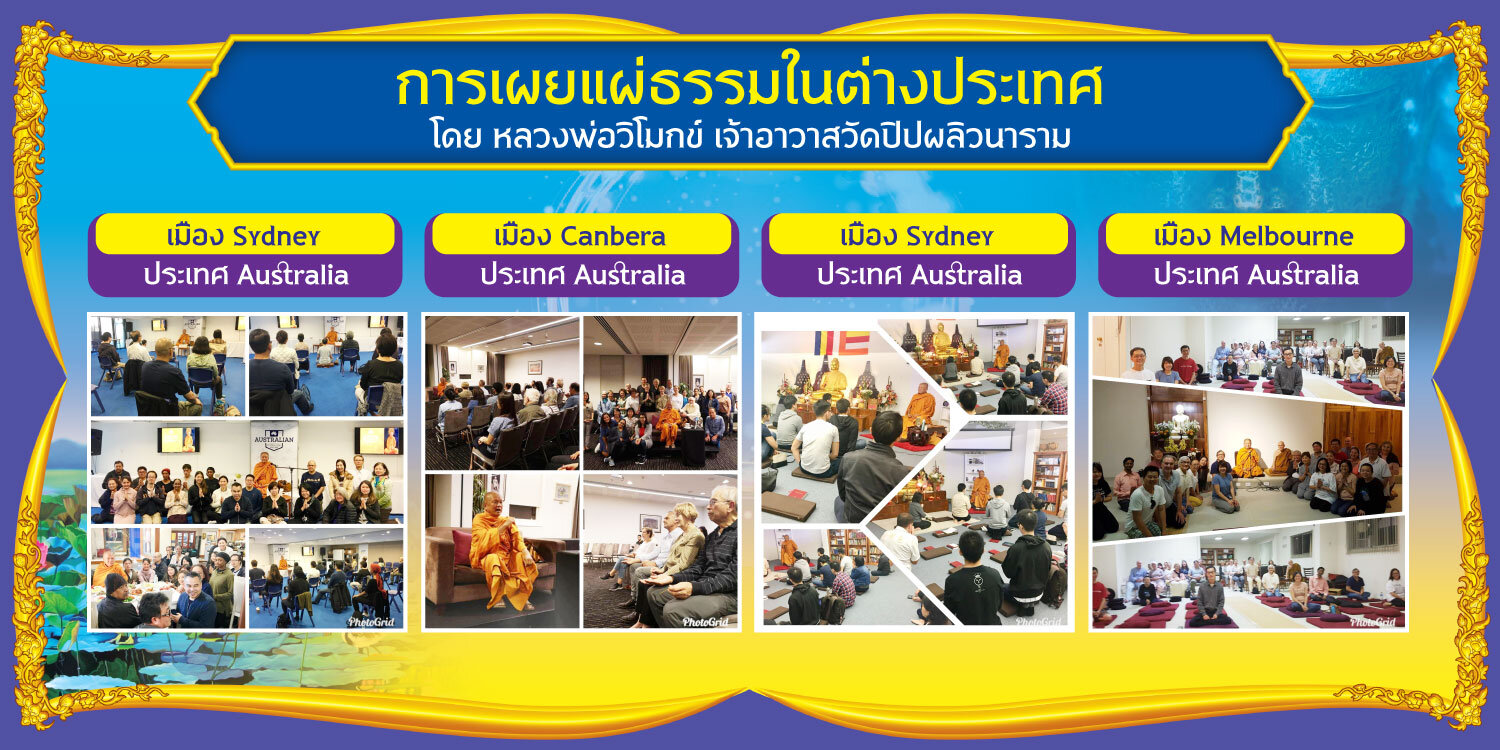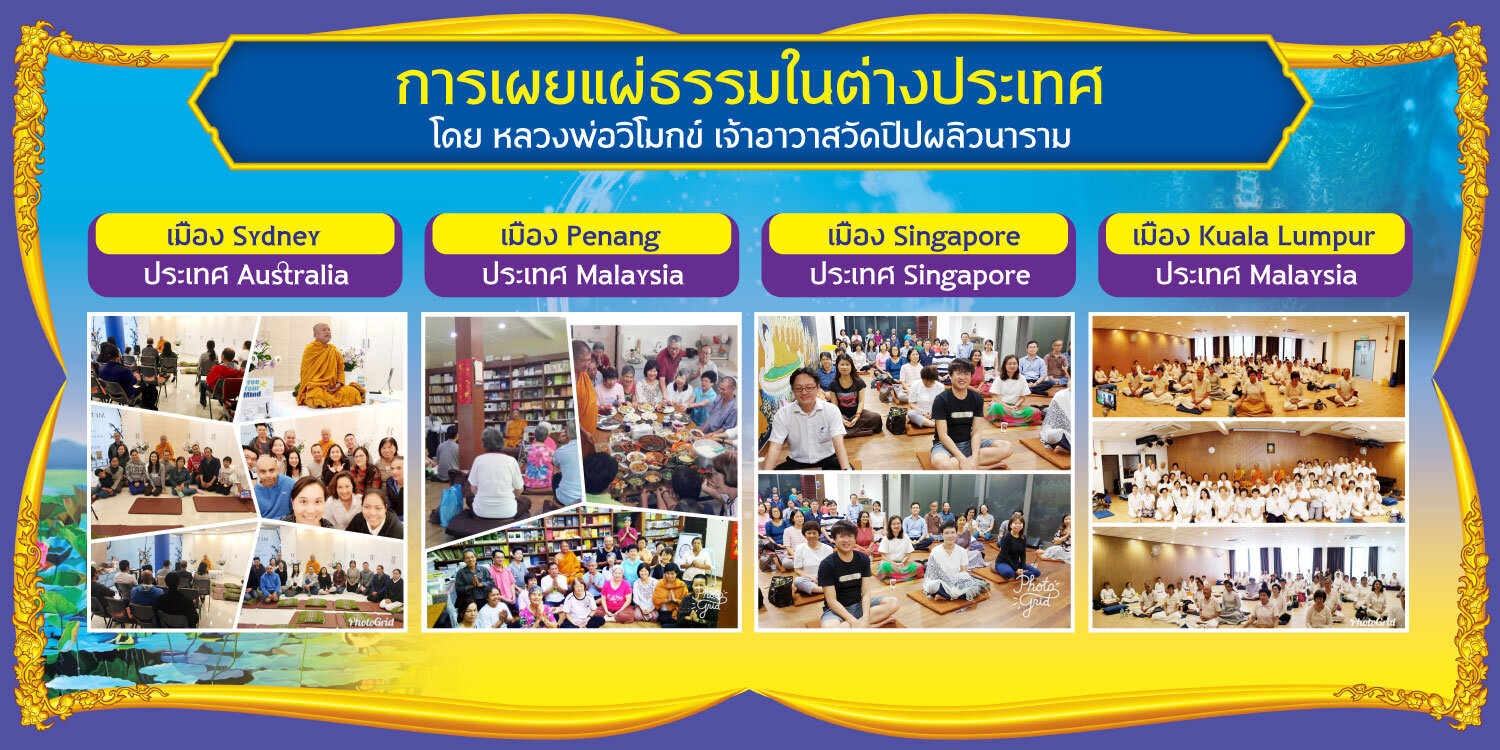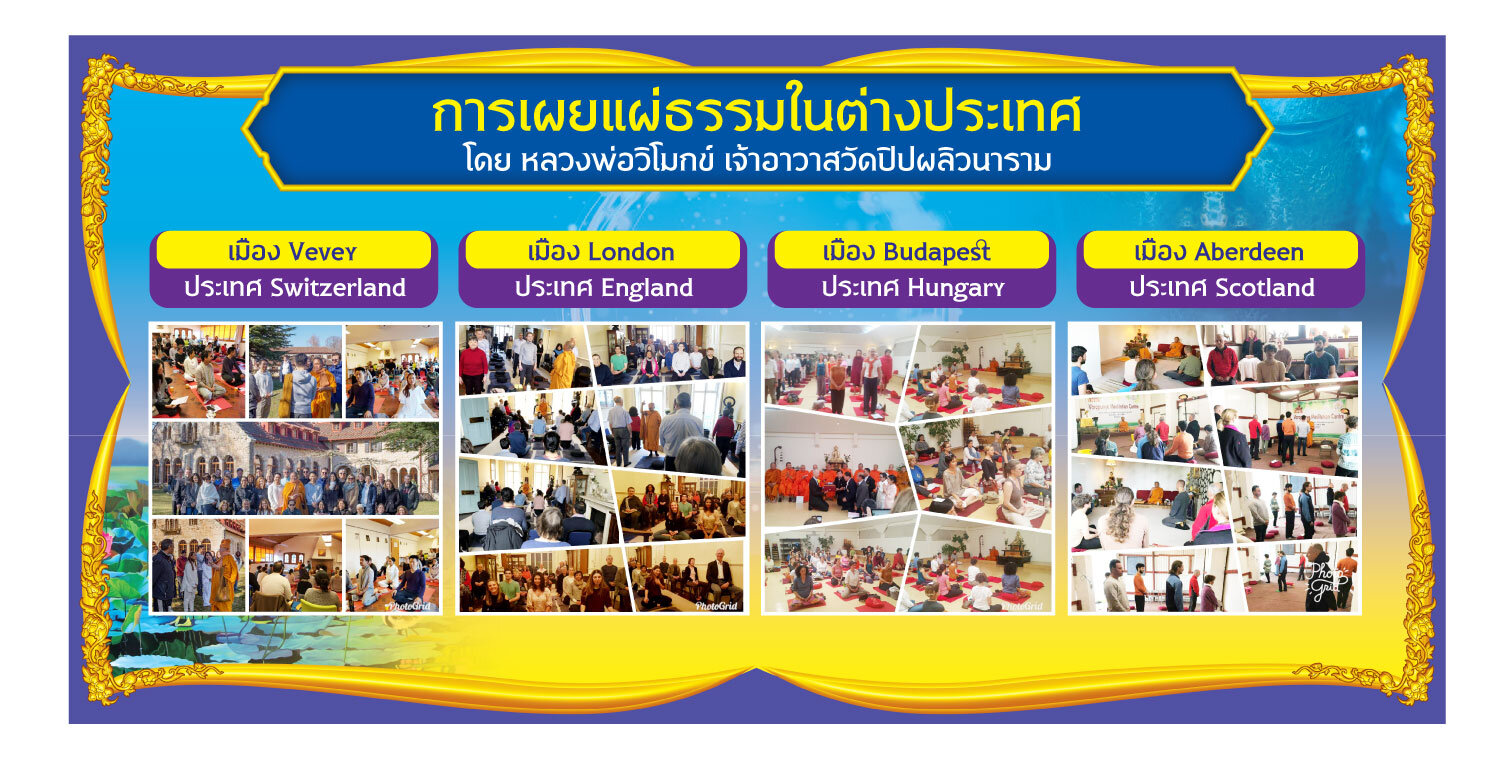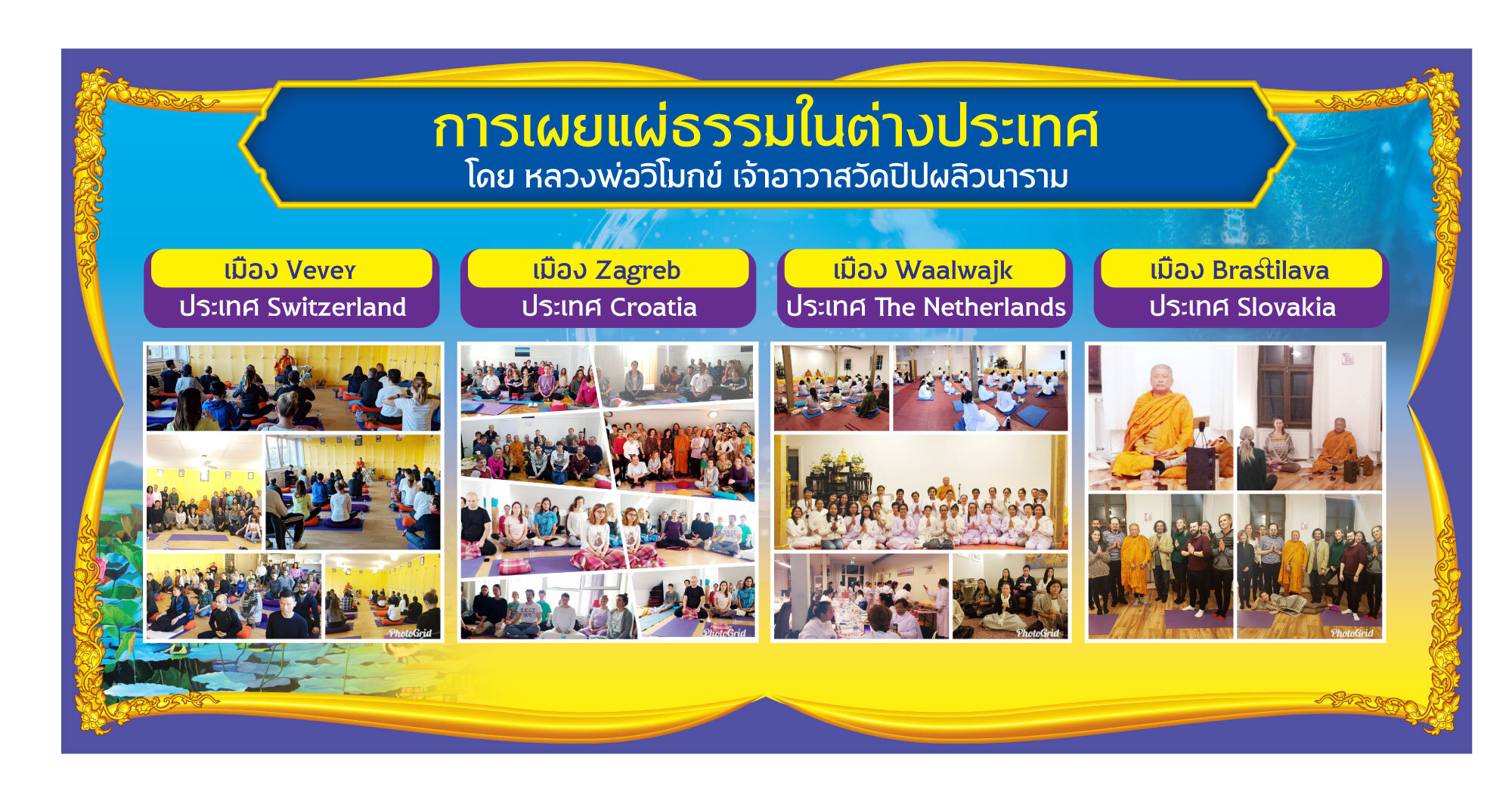A pragmatic guidance on Satipatthana
The Four Foundations of Mindfulness
by Ven. Vimokkha Metino, Wat Pipphalivanaram, Rayong, Thailand
1) Contemplating the body
· Contemplation with mindfulness and awareness over the whole body: watching, knowing and seeing the four postures and movement of the body (Kayagatasati)
· Contemplation with mindfulness and awareness, watching, knowing and seeing the breathing in-and-out (Ānāpānasati)
· Contemplation with mindfulness and awareness, watching, knowing and seeing the rising and falling of the whole body (also the stomach rising and falling)
· Contemplation with relaxation and letting go every moment, the mind will wake up with one-pointedness (the gunman)
· Contemplation with the one-pointedness of mind (the gunman), watching, knowing and seeing all the contacts regarding eye, ear, nose, tongue, body and mind
· Contemplation with the one-pointedness of mind, and letting-go as well with the whole body relaxing; the body becomes more fully conscious with sensing the whole body naturally
2) Contemplating the sensation
· With trust in the Buddha, smile and more letting-go, the heart become more aware, sensing sensation
· Contemplating with sensing over the Body Sensation
· Contemplation with sensing over Movement Sensation
· Contemplation with sensing over the four elements sensation
· Contemplation with sensing over suffering or pain
· Contemplation with sensing over the sensation linked to the mind
3) Contemplating the mind
· Contemplation with clear awareness deep inside, knowing and seeing all formation of mind (Saṅkhāra)
· Contemplation with clear awareness deep inside, knowing and seeing the five aggregates (five Khandhas)
· Contemplation with clear awareness deep inside, knowing and seeing emptiness with some boundaries (due to the residue of desire and attachment)
4) Contemplating the Dharma or mental qualities
· Contemplation with listening to one's mind and heart, seeing subtler mental qualities
· Contemplation with clear knowing deep inside, knowing and seeing wholesome and /or unwholesome states in the mind
· Accept and understand, with letting go, all mental qualities; seeing things as they really are with more acceptance, understanding and letting go, resulting in equanimity of mind (Upekkha)
· Contemplation with more acceptance, understanding and letting-go, thus waking up in emptiness with equanimity of mind (Upekkha); seeing the path going inwards with clear awareness and release
· Contemplation with more letting-go, thus self-realization comes up from the heart; with more and more emptiness leading to unbound emptiness or supreme emptiness
· With unbound emptiness, the light of wisdom or Dhamma eye comes up, seeing the stream entry
· Contemplation with Dhamma eye seeing the stream entry, with acknowledgement and letting go of all mental qualities
· Stream entry with Dhamma eye exploring all mental qualities deep inside with more letting go and release
· Dhamma eye seeing and letting go all attachment regarding the body, sensation, perception, Saṅkhāra and consciousness deep inside
· Clear Awareness and release deep inside, seeing the four Noble truths (Arriya-Sacca 4)
· Clear Awareness and release deep inside, seeing the dependent origination (paṭiccasamuppāda)
· Clear awareness and release deep inside, seeing release and all letting go
The Bodhi-mind or the Buddha nature wakes up with clear knowing and release, seeing the freedom of mind or the enlightenment







